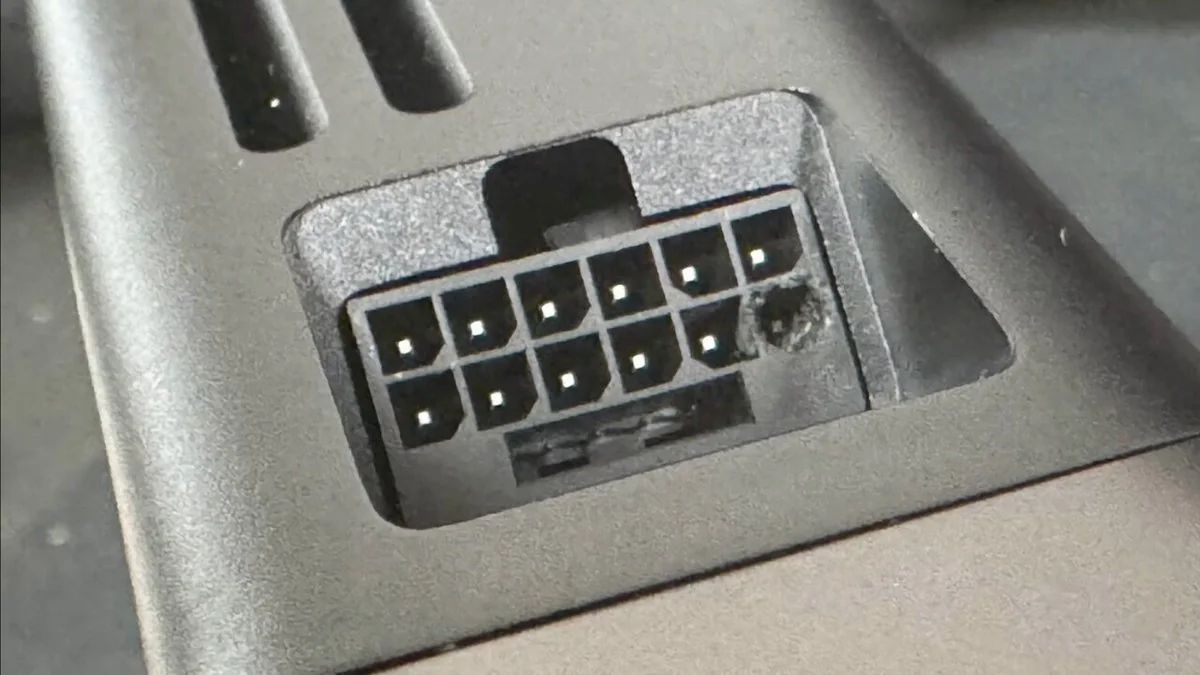In a recent tweet that sparked a robust discussion amongst tech enthusiasts, a user shared their innovative solution to a significant issue impacting the Nvidia RTX 5090 graphics card: melting power connectors. The tweet, accompanied by a link to their fix, has generated a mix of intrigue, humor, and practical suggestions from the community, showing a collective effort to address a frustrating technological problem.
The Nvidia RTX 5090, a powerhouse in the graphics card industry, has faced criticism due to reports of its power connectors melting under normal operating conditions. Such issues not only threaten hardware integrity but also raise concerns about safety in users’ rigs.
The original tweet has thus turned into a central hub of ideas and reflections, each contributing to a broader dialogue about safety, design efficiency, and user experience in high-performance computing environments.
As responses began to pour in, some users presented alternative design ideas. One user, @olahf84, proposed the integration of power handling directly into the board, suggesting that this could create a more efficient way to manage power supply issues, especially for those running high-load tasks like gaming or rendering.
They mentioned that circuits could be designed to step down voltage from typical home electricity levels to what the graphics card needs, hinting that these solutions are not only theoretical but also feasible.
Humor was not left out of the conversation. @CeDeROM chimed in with a comedic take on a “15MB attachment picture in a closed source proprietary commercial application format,” poking fun at the technical jargon that often accompanies such discussions. This light-hearted response illustrated the community’s ability to find humor in even the most technical situations, creating a balanced tone throughout the thread.
Criticism also surfaced, particularly regarding the design decisions that led to this issue in the first place. User @VibigStick expressed doubt, stating that any proposed solution would “fry the board in seconds.” This highlighted a key tension within the conversation: while many were focusing on fixes, others were skeptical of the fundamental design flaws that might need rectification rather than patchwork fixes.
Meanwhile, suggestions flowed freely as others echoed similar sentiments about the need for reliability. @JasonEJohnson noted their confusion as to why such solutions hadn’t been standard practice in graphics cards, calling for a more thorough reassessment of design principles to enhance user safety and experience. The overwhelming agreement on this point illustrated a shared desire for improved engineering standards within the industry.
In contrast, some responses highlighted more humorous observations or general tech frustrations. For instance, @Terp_frog acknowledged the precariousness of the situation, noting, “Were getting very close to this point 🤣,” which alluded to the ongoing issue without undermining the community’s serious discussions.
Lastly, various users criticized Nvidia specifically in their dealings, with some suggesting that the issue lies not only in technical execution but also in a need for better customer awareness and proactive problem-solving from hardware manufacturers. User opinions swayed between direct support of creative fixes and broader calls for corporate responsibility.
As the conversation evolves, the community appears to be leaning towards not just short-term fixes, but also long-term solutions that emphasize robust design principles.
The dialogue surrounding the RTX 5090 is a testament to enthusiasts’ frustrations and their desire for technological advancement that prioritizes reliability and safety.
In conclusion, the melting power connector issue of the RTX 5090 has ignited a passionate discussion that reveals not only technical insights but also a community’s unwavering commitment to improve technology for gamers and professionals alike. The DIY energy continues to thrive in tech culture, reminding us that even problems can bring together innovative minds and provoke important discussions about the future of hardware design.







